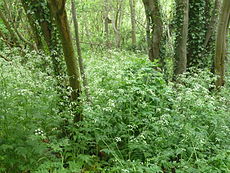Thumatha senex
| Thumatha senex | |
|---|---|

| |

| |
| Scientific classification | |
| Domain: | Eukaryota |
| Kingdom: | Animalia |
| Phylum: | Arthropoda |
| Class: | Insecta |
| Order: | Lepidoptera |
| Superfamily: | Noctuoidea |
| Family: | Erebidae |
| Subfamily: | Arctiinae |
| Genus: | Thumatha |
| Species: | T. senex |
| Binomial name | |
| Thumatha senex (Hübner, 1808) | |
| Synonyms | |
| |
Thumatha senex, the round-winged muslin, is a moth of the family Erebidae. It is found in northern and central Europe, the Alps, northern Asia Minor, the Crimea and south-western Siberia.
Technical description and variation
The wingspan is 15–20 mm. Not unlike Nudaria mundana ( mundana has less-rounded forewings and a more transparent appearance, less obvious spots). The central spot at the apex of the cell distinct; a larger shadowy spot at the middle of the costa, and before the marginal area of the forewing a row of spots which are especially distinct in the costal region. Another curved row of spots bounds the basal third of the forewing.[1]


Biology
Adults are on wing from mid-June to mid-August in one generation.
Egg round, yellow. Larva ashy grey, very hairy, with black head. The larvae feed on lichen (especially Peltigera canina) and mosses. Pupa stumpy, dark brown, in a dense hairy cocoon.
The moths fly on damp meadows, and are not rare in their flight-places; they come to the light at night.
References
- ^ Seitz, A. Ed. Die Großschmetterlinge der Erde, Verlag Alfred Kernen, Stuttgart Band 2: Abt. 1, Die Großschmetterlinge des palaearktischen Faunengebietes, Die palaearktischen Spinner und Schwärmer, 1912-1913
External links
